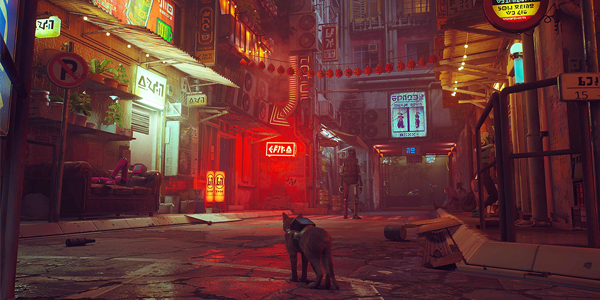
video game review | Marvel’s Spider-Man
This video game manifestation of Spidey not only makes for an intensely cinematic experience but packs an emotional wallop that tops the various movies
by Dennis Burger
November 7, 2019
It may seem odd to shine a spotlight on a game that was released more than a year ago, but while Marvel’s Spider-Man was released for PlayStation 4 back in September 2018, I found myself in the middle of a long hiatus from console gaming to focus on some more strategic PC games that had been piling up in my Steam library. What drew me back was an unused PlayStation Network gift card my dad had given me for my birthday, as well as the relatively new release of the Spider-Man: Game of the Year Edition, which hit store shelves this autumn.
For those who aren’t deeply embedded in video-gaming culture, “Game of the Year Edition” is common vernacular for a soft relaunch of a popular game that generally includes all the little add-ons that have been released since, bundled with the original title, for one lower price. In the case of Spider-Man, that includes three mini sequels, collectively dubbed Spider-Man: The City that Never Sleeps, which sold for $9.99 a pop in the months following the main release. Spider-Man: Game of the Year Edition collects the original game and its followups on one disc (or in one download) for $35.
You may also be wondering why we’re covering a video game on a site that typically focuses on luxury home cinema. There’s a good reason for that, which has nothing to do with my long delay in finally picking it up and playing it. Marvel’s Spider-Man is one of the most cinematic games I’ve played in ages, both in its gameplay and its AV presentation. But not in the most intuitive of ways.
At its heart, Spider-Man is what’s known as an open-world game, the world in this case being a slightly scaled-down and very Marvel-specific version of Manhattan circa 2014 (when development of the game began). This playground in and of itself is a technological wonder, not only in its relatively faithful recreation of Times Square, the Empire State Building, Grand Central Station, etc., but also in the way it captures the feeling of moving through the city from district to district, squinting at the sunlight gleaming off buildings in the daytime and the stunning array of neon, halogen, and LED lights piercing what little darkness exists in the shadows at night. The way the game uses its deep shadows and intense highlights to convey the Manhattanhenge effect is among the best applications of HDR I’ve seen to date.
All of this could be written off as mere eye candy, but it’s more than that. The game’s developers, Insomniac Games, spent so much time working on the web-swinging mechanic—making sure webs would only attach to buildings or flagpoles or what have you rather than clinging to empty air as in past Spidey games and also making sure the parabolic physics of such swinging felt genuine—that if there weren’t some verisimilitude to the look of the city itself, the illusion of Tarzaning through its vertical landscapes would be broken.
It isn’t just graphics and physics that drive the experience, though. The sound also elevates the AV presentation of the game, with a rich real-time uncompressed 7.1 soundscape and cinematic score that whips and whirs around you as you swing through the city or walk its streets, or even poke around in the science lab where Peter Parker works when the red-and-blue pajamas come off. (By the way, not that this really affects the gameplay, but you’re far from limited to the default two-toned onesie, as one of the game’s most compelling Easter-egg hunts is an ongoing search for the badges and components that allow you to craft or unlock all manner of other Spidey-suits.)
Of course, whooshing around from skyscraper to skyscraper or tinkering with circuit boards in the lab isn’t all there is to do here. There’s an overarching story—based not on any of the previous versions of the Spider-Man mythos but rather a new amalgamation that draws elements from the best that movies and cartoons and comics have to offer—and you’re drawn to new story beats by way of police-scanner alerts or cellphone calls from allies and loved ones.
It’s a more emotionally engaging story than that of any Spider-Man film to date, in part due to its complex ethical and moral themes but also due to its length. If you don’t stop to thwart muggers or terrorists or take perfectly framed photos of Manhattan’s numerous landmarks, you could probably burn through the main storyline in 20 or 25 hours.
That’s certainly enough time to become attached to characters and invested in relationships but it would also be completely contrary to the point of the game. The beauty of Marvel’s Spider-Man is the freedom it gives you to explore this world and its original storyline at your own pace.
As I approached the end of the main quest, my wife and I sat on our sofa—me an active participant in this interactive storytelling-and-exploration experience; her a very willing passive viewer—and openly wept at the poignant and impactful emotional resolution of it all. It’s that engaging.
Of course, having the Game of the Year Edition meant I still had three more intertwining stories to explore, more petty crimes to deal with between the Church of the Intercession and Battery Park, and more time to rummage around in its sewers and abandoned subways. And while feeling a little tacked on at first, this trilogy of mini sequels eventually evolves into yet another web of intrigue that picks up on threads only hinted at in the main storyline. It may lack some of the personal emotional resonance of the main game but it does amp the moral complexity up to new levels.
Whether you merely play through the primary questline of Marvel’s Spider-Man or pick every achievement and side quest clean, as I’ve done, you owe it to yourself to play it on the best AV system in the house. And yes, that even includes an Atmos system.
I know I’ve grumped in the past about not being the biggest fan of object-based surround sound with movies but the 7.1 soundtrack of Spider-Man upmixed into Atmos opens the landscape of Manhattan up in tangible ways. Hearing the roll of thunder and crack of lightning over and around you simply brings this sprawling environment to life.
If you do play the game through a reference-quality sound system, make sure to dip into the audio settings and make one essential tweak. Change the default sound mode from Home Theater, which is really intended more for soundbars and smaller sound systems, to Maximum, which is mixed for “premium home theater systems or studio playback.”
Little touches like that prove at least some game developers realize the home cinema potential of their efforts, even if the AV industry continues to treat video games like mere children’s entertainment.
Dennis Burger is an avid Star Wars scholar, Tolkien fanatic, and Corvette enthusiast who somehow also manages to find time for technological passions including high-end audio, home automation, and video gaming. He lives in the armpit of Alabama with his wife Bethany and their four-legged child Bruno, a 75-pound American Staffordshire Terrier who thinks he’s a Pomeranian.
PICTURE | One of the most cinematic games to date, with the intense HDR highlights helping to enhance the effect of web-slinging your way through Manhattan
SOUND | The rich real-time uncompressed 7.1 soundscape and cinematic score whips and whirs around you as you make your way through the city
© 2023 Cineluxe LLC



